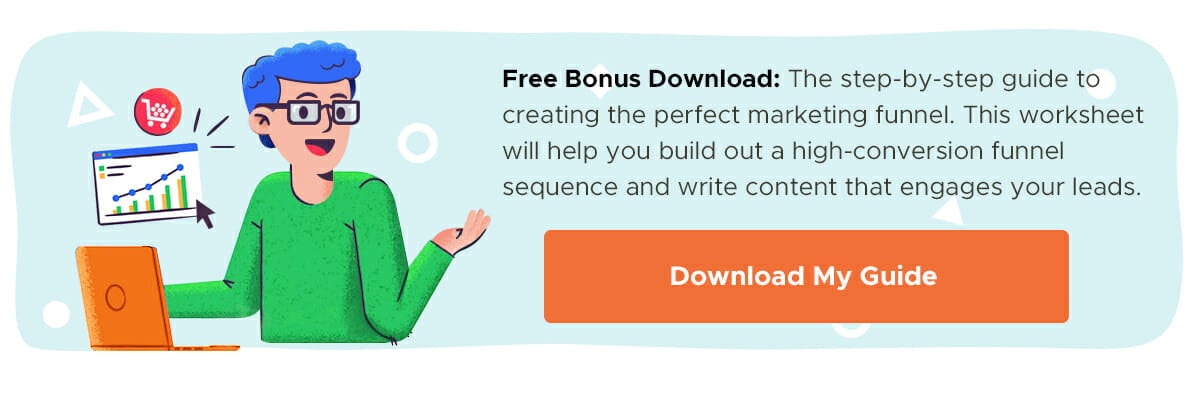Updated August 2024.
Lead generation is crucial to business health. There’s no getting around that. Without a steady stream of leads flowing in the door every day, it’s hard to sustain the momentum needed for successful business growth.
But if you’ve put all the standard lead generation wisdom to work and you’re still falling short of your revenue goals, it may be time to think outside the box. If you’re ready to take your lead generation to the next level, check out the following seven unconventional strategies for generating more leads.
As digital marketers, we all know the crucial role of lead generation in digital marketing. Yet despite its importance, lead generation often falls victim to routine: create a free webinar for this campaign, write a free eBook for that one. It’s easy to forget that in this attention economy, originality is rewarded.
In case you’re out of ideas, or are just looking for some inspiration, here’s the magic behind some of the internet’s most forward-thinking lead generation campaigns. Whether you’re just starting off or looking for fresh ideas, these tried-and-true techniques are simple methods to improve your lead generation:
Strategy #1: Use a Customer Data Platform
I’ve been talking about this a lot lately, but I don’t think I’ve hammered it home enough yet: Having a customer data platform basically turns you into a marketing ninja.
If you aren’t familiar with the idea of a customer data platform, Arm Treasure Data defines it as:
“a data management solution that imports customer data from multiple sources, integrates, cleans and organizes it, and creates a unified profile of every single customer. CDPs then take that structured data and push it out to other martech platforms and web systems to enable advanced customer-centric functionality like personalization.”
In practice, all of these capabilities turn into something magical. Ten years ago, if you had said “I want to be able to find the email addresses of all the people from enterprise companies that visit my website and then drop them into different sales sequences for retargeting,” it would have sounded totally unreasonable. But now, programs like Hull and Segment are basically automating that exact process:
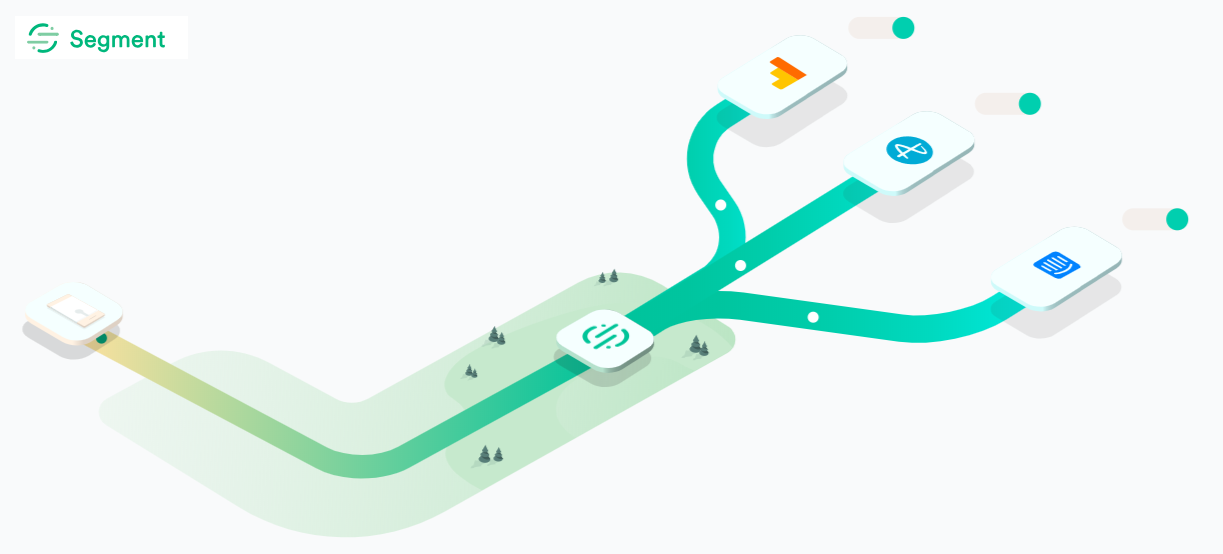
Yes, tools like these can be complicated to set up. They require some tech skills. But think about someone like Neil Patel, who’s getting seven-figure traffic each month. With a customer data platform, he’s going to be able to create so many more opportunities that other businesses will never see. You’re going to be able to really utilize the data you have, whereas most companies are just scratching the surface.
Learn More:
- How to Write Lead Nurturing Content: 7 Proven Tactics
- How Correctly Used Pop-Ups Can Help Increase Leads
- 4 Ways to Use Automation with Account-Based Marketing for Better Lead Nurturing
- How to Excel in Lead Nurturing: A Quick Guide for Digital Marketers
Strategy #2: Use Quizzes to Improve Lead Quality
When it comes to leads, quality is king. You could have thousands of leads in your funnel, but if they aren’t the right people, those numbers don’t matter. They’ll never convert customers.
To make sure you’re capturing the right leads, you need more information. But that doesn’t have to mean forcing prospects through 20 different form fields. Neil has used a tool called LeadQuizzes that makes gathering information fun, because it feels more like a quiz that visitors want to go through:
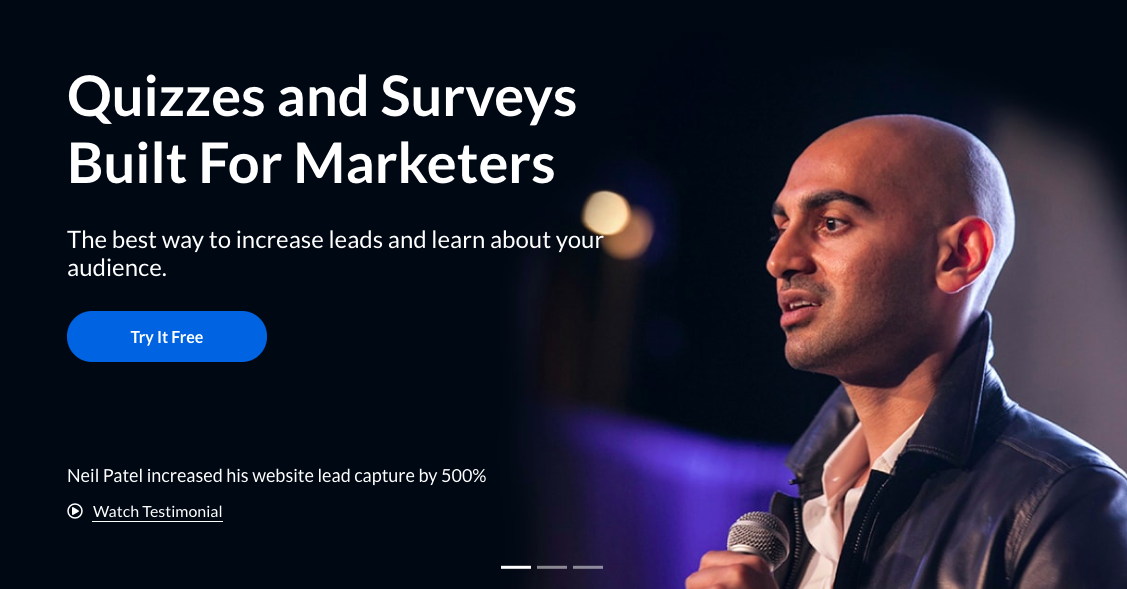
Neil has used a lead quiz as his exit pop-up, but there are plenty of different places you could use a tool like this to increase your visitor-to-lead rate. For example, you could set something like this to trigger on your pricing pages or your “Contact Us” page. If you use content upgrades on your site, you could require the completion of a quiz to access full content versions.
BuzzFeed figured out a long time ago that people love taking quizzes. Use this human tendency to improve your lead generation efforts using LeadQuizzes.
Strategy #3: Use Personalization
The benefits of personalization are pretty obvious. Do you feel better about buying from the business that treats you like a transaction, or do you want to buy from one that rolls out the red carpet and treats you like the only customer in their sales funnel?
Research on personalization backs this up. According to Business2Community:
“75% of consumers are more likely to buy from a retailer that recognizes them by name, recommends options based on past purchases or knows their purchase history.”
That said, the personalization efforts of most companies are falling short. Research from Pure360 suggests that “basic personalization fails to engage consumers in any real way. Just 8% of survey respondents said that they would be encouraged to engage with a retail brand if they addressed them by their first name. Similarly, only 7% said they would be likely to engage with a birthday email.”
If you really want to use personalization to improve your lead generation efforts, you have to use it in a way that demonstrates your deep understanding of the prospects you’re targeting.
Drift is one example of a company that gets personalization right:
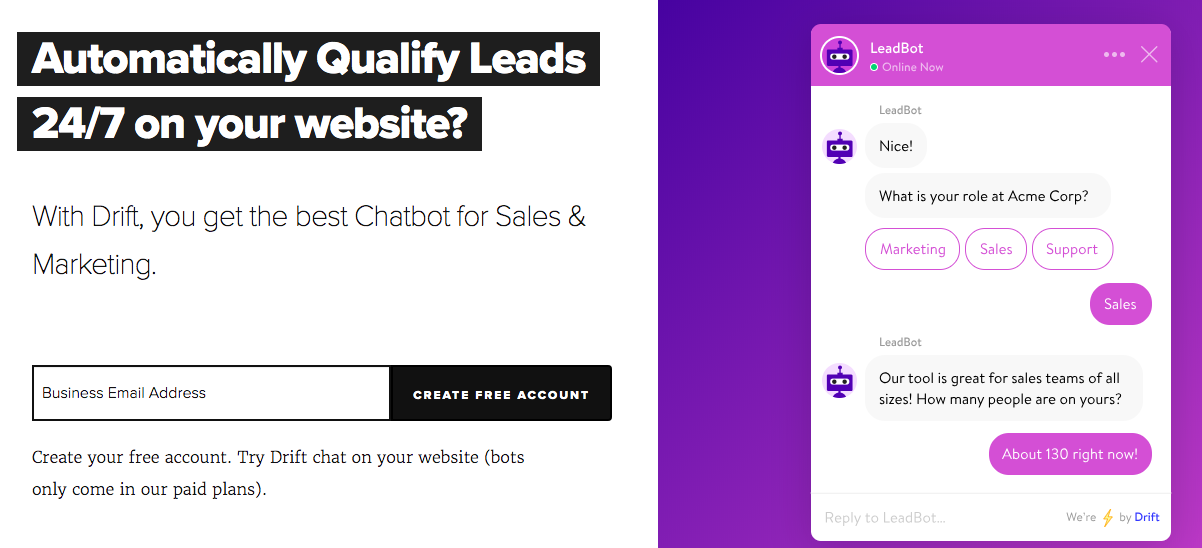
Thanks to their use of customer data platforms and other technologies, they’re able to tailor their live chat tool to the specific person visiting their website. For example, they didn’t just realize that someone from Delta Air Lines was visiting their site – they were also able to personalize their chat window to say, basically, “Hey, we help companies like Delta Airlines.”
And going back to the example of Hull, if I go to their website, I see the Single Grain logo in the middle, and the copy around it is talking about how they can help Single Grain. That’s a great feeling for me. It creates a feeling of being a little concierge-like, which makes me feel good about wanting to learn more.
Strategy #4: Use Dynamic Text Replacement
Neil has had great success with dynamic text replacement – on the level of a 10-12% conversion rate – using a tool called MaxMind to add visitors’ geographic locations to his copy.
He started with somewhat generic headline copy, which read, “Hey, I’m Neil Patel. I’m looking to help businesses grow. The only question is, will it be yours?” But using MaxMind, he was able to sub in visitors’ cities, so that the copy would read something like, “Hey, I’m Neil Patel. I’m looking to help businesses in Las Vegas, Nevada, grow. The only question is, will it be yours?”
That one little change drastically increased his lead numbers, all thanks to the level of personalization that customizing the copy to his visitors’ locations added to his site.
But dynamic text replacement doesn’t have to be that specific to work. On the Optimizely blog, Takeshi Young shares how the company tested 26 different homepage variations, each tailored to one of the company’s specific target audiences, like these three examples:
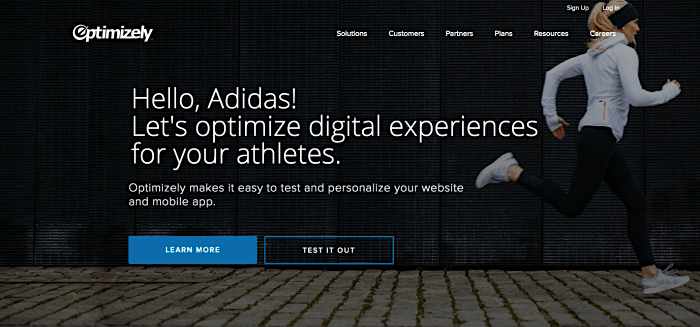
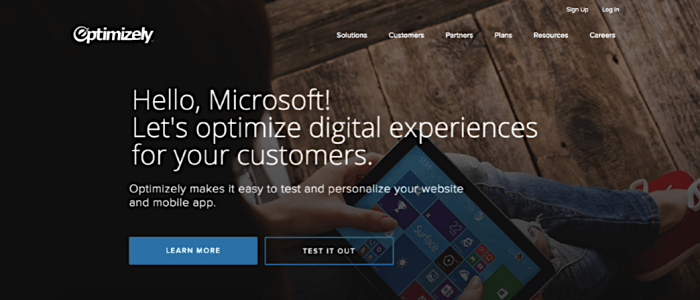
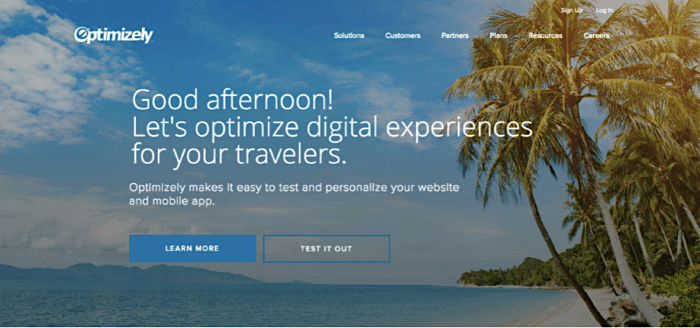
Although customizing the homepage to groups like “travelers” is hardly on the same level as Neil’s city-specific headline copy, Optimizely still saw the following results as part of its experiment:
- 1.5% increase in engagement
- 113% increase in conversions to their Solutions page
- 117% increase in conversions to the account creation process
Personalization matters. Tools like dynamic text replacement – available now through many landing page and email template builders – make a difference.
Learn More:
- How to Use Social Media for B2B Lead Generation
- How AI Is Shaping the Future of Content Marketing and Personalization
- 20 AI Tools to Scale Your Marketing and Improve Productivity
- How to Use Personalization to Increase the Impact of Email Marketing
Strategy #5: Use Machine Learning for Lead Scoring
Lead scoring is tricky. Unless you’re an expert in the area – and unless your sales funnel is well-established and time-tested – how can you really know how to weigh specific actions or what value to assign to each?
Of course, you can test different arrangements and iterate until you find the scoring setup that will most accurately predict your success. Or you can jump the line and use machine learning to figure out how likely it is that an individual person will become a high-quality lead and, eventually, a customer.
I use MadKudu for this, in part because it integrates so well with other tools like Drift and Hull. Even if your stack looks different, it ties into so many different tools that it’s a great resource to help SaaS companies make better decisions about where they should be putting their sales and marketing resources.
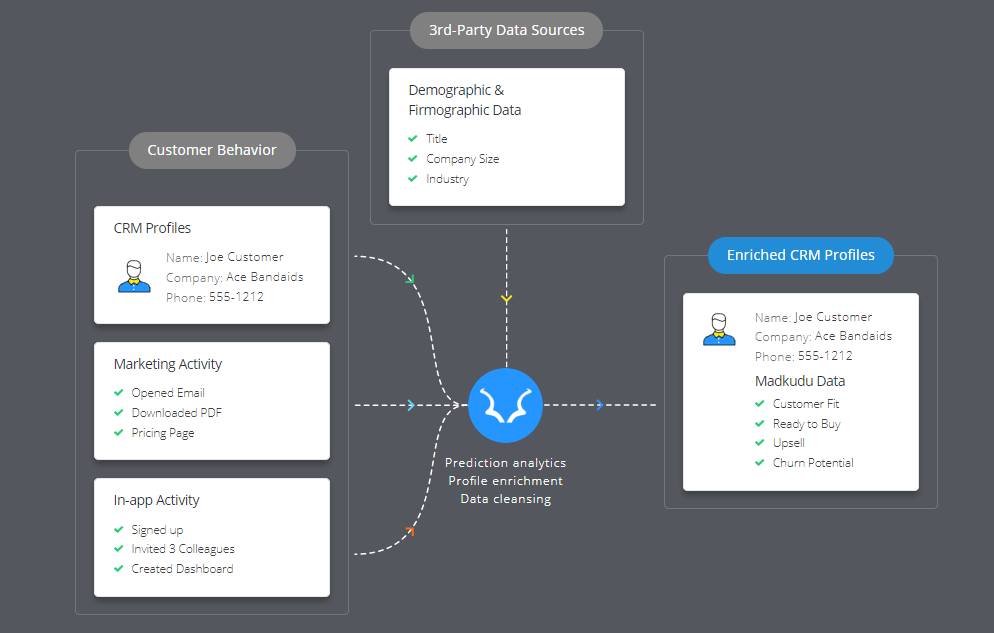
Strategy #6: Use Pre-Filled Forms
People can be lazy. Prospects even more so, because the value proposition of sharing their personal information with you isn’t always clear for them. Sure, you might solve a problem they have, but it’s also possible that they’ll end up stuck in yet another sales funnel if you aren’t the right fit.
Anything you can do to minimize the friction required to capture visitors’ personal information helps overcome this reticence, which is why I’m a fan of pre-filling peoples’ information for them. Using API services like Clearbit makes this easy, so that when visitors come to your site, half the effort of opting in is already taken care of for them:
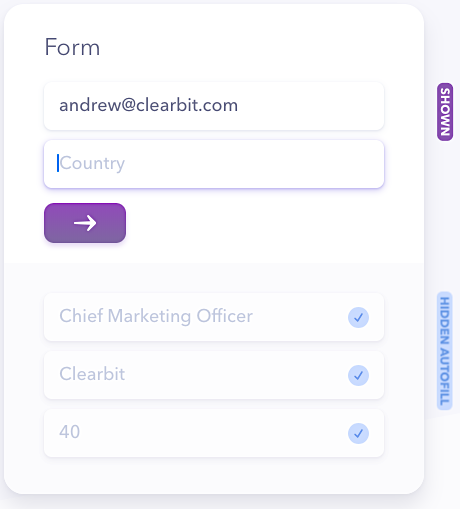
Using their Twitter profile information, Twitter automatically fills in users’ First Name and E-mail fields (since it’s connected to Twitter, it is highly likely one of their active inboxes) if they’re considering opting in. Lead Generation Cards also enable marketers to use images to get attention. (And if anyone is involved in retail, check out Product Cards as well!)
Learn More:
Strategy #7: Leverage Interactive Content
Interactive content is a powerful tool for engaging potential leads and gathering valuable information. By creating content that requires active participation from your audience, you can increase engagement, time on site, and lead capture rates.
Examples of interactive content include:
- Calculators: Create tools that help prospects estimate costs, ROI, or other relevant metrics for your industry.
- Assessments: Develop self-evaluation tools that help visitors understand their needs or challenges related to your products or services.
- Interactive infographics: Transform static data into engaging, clickable experiences that reveal more information as users interact.
- 360-degree product views: Allow potential customers to explore your products in detail, increasing their interest and likelihood of conversion.
By incorporating interactive elements into your content strategy, you not only provide value to your audience but also create natural opportunities to capture lead information. For example, you could offer to email the results of an assessment in exchange for contact details.
Last Thoughts on Unconventional Lead Generation Strategies
Lead generation is an ever-evolving field, and staying ahead of the curve requires creativity and a willingness to experiment with new techniques. The seven strategies we’ve explored in this article – from leveraging customer data platforms and personalization to using machine learning for lead scoring and interactive content – offer innovative ways to capture high-quality leads and nurture them effectively.
By implementing these unconventional strategies, you can set your business apart from competitors who rely solely on traditional lead generation methods. Remember, the key to success lies in understanding your audience, providing value, and reducing friction in the lead capture process.
As you move forward, don’t be afraid to test and iterate on these strategies. What works best for your business may be a unique combination of these approaches, tailored to your specific audience and industry. Keep measuring your results, listening to your prospects, and refining your tactics to build a lead generation engine that drives sustainable growth for your business.
If you’re ready to level up your lead generation, Single Grain’s lead generation experts can help!👇
For more insights and lessons about marketing, check out our Marketing School podcast on YouTube.
